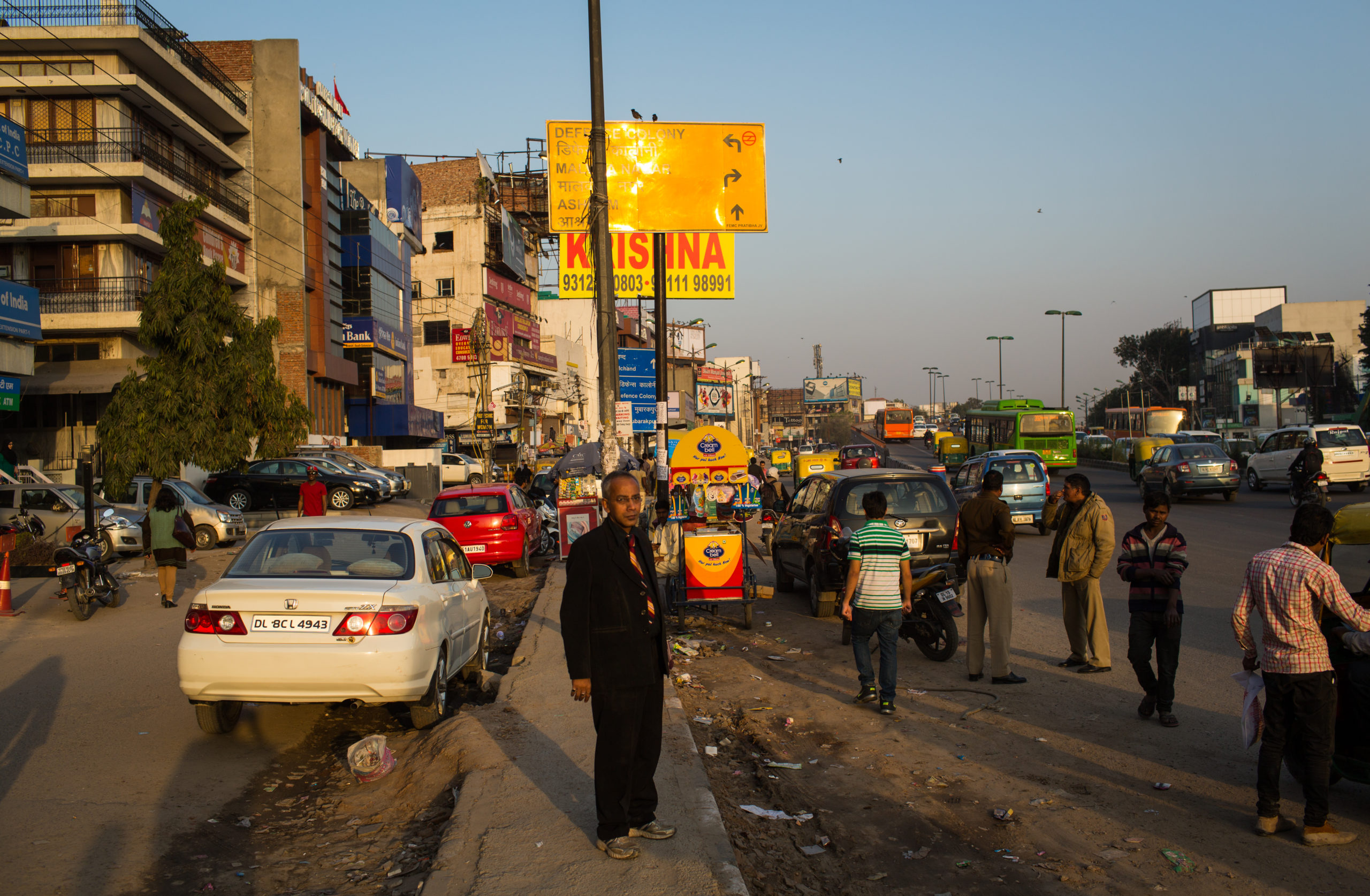Elderly couple’s death in Dwarka shows how unsafe roads are for pedestrians
A death of an elderly couple, Shanti Swaroop Arora (79) and his wife Anjula Arora (62), in a road accident puts the spotlight back on how unsafe walking on Delhi’s roads are. The CCTV footage of how and what led to the deaths of the husband-and-wife duo in South-west Delhi’s Dwarka was shared extensively over the internet. It revealed to all watchers who the killer behind the wheel was, a footage which ultimately helped the police arrest the real culprit – 28-year-old Nupur Choudhary.
A slow-moving SUV was seen hitting the couple and running over them as they walked on the side of the road. After the accident the driver took the couple in her car to the hospital, with the help of locals. Her elder sister Deepakshi who had reached the spot shortly after the accident confessed to the crime she hadn’t committed.
Reports later claimed it was to save Nupur’s job in a public sector bank. DCP Dwarka, Santosh Kumar Meena told Patriot the factor behind Deepakshi’s decision has not been found yet, but confirmed Nupur had a government job while the elder sister worked in a private company. Furthermore, the DCP said Nupur’s family claimed she was “pampered” adding, that she is the “chhoti bacchi” (younger child) and they “wanted to protect her”.
Nupur’s reason behind managing to kill two persons while going at a seemingly slow speed, was that she was lost in thought. A report in Indian Express stated that an initial probe had found that she had been allegedly checking her WhatsApp messages when she hit the couple.
DCP Meena did not confirm this but said possibilities were being looked into. He did agree that he in the past has seen many accidents which have happened due to the use of mobile phones while driving.
Plagued with overrun footpaths, or even non-existent ones, roads are extremely unsafe for pedestrians. And if its not over speeding vehicles then a distracted driver, like one on their phones will get the pedestrian or cyclists injured or worse, killed.

A study called ‘Road Safety in India: Status Report 2020’ by IIT Delhi’s Transportation Research & Injury Prevention Programme Indian found that the proportion of vulnerable road user (pedestrians, bicyclists and motorised two wheelers) deaths in nine cities, including Delhi range between 84% and 93%, while car occupant fatalities between 2% and 7%.
School of planning and Architecture (SPA) is in fact mapping Dwarka’s walkability in their report for preparing mobility plans for Delhi’s Sub city. We spoke with the Head of Department, Transport planning at SPA, Professor Sewa Ram who said they found many footpaths in Dwarka had been found to be inaccessible. “Not just having footpaths, but also having walkable footpaths (is important). We found at times, the footpaths discontinue, at times the height is inaccessible and some also have manholes, which then it leads the people to walk on carriageway instead of footpath.”
“It is very unfortunate that we tend to walk on roads instead, because of the footpaths not being there or inaccessible.” He adds that his team’s priority while mapping mobility in Dwarka is first its pedestrians then cyclists, followed by public transport and public transit and then the first and last mile connectivity.
We know pedestrian are unsafe, and adding mobile phones to that concoction of over-speeding, driving under the influence, driving on the wrong side, takes the threat level further. Data provided by the Ministry of Road and Transport, with latest available record for 2018 shows that in Delhi, while over-speeding caused 5,530 accidents, it was 280 accidents which took place due to use of mobile phones while driving.
In total, Delhi saw 5,610 road accidents in 2019, with 1,463 people killed in them – four persons killed on an average daily. Answers to questions in the Lok Sabha made known that in 2020 that went down to 4,178 with 1,196 killed – three persons killed on an average daily.
But moving on to why mobile phones have become lethal, a survey by SaveLife foundation back in 2017 ‘Distracted Driving in India A Study On Mobile Phone Usage, Pattern & Behaviour’ explains it. Mobile phone usage causes four types of distractions it points out: visual, auditory, cognitive and manual/physical.
“While visual distractions cause drivers to look away from the roadway, manual distractions require the driver to take their hands off the steering wheel, auditory distractions mask those sounds that are crucial for the driver to hear while driving and cognitive ones induce the driver to think about something other than driving.”
The report goes on to say that distraction caused by mobile phone usage while driving, can increase reaction time and increasing frequency of lane change. Distractions while driving have now joined alcohol and speeding as leading factors in fatal and serious injury crashes
The survey reveals that nearly half the respondents (47%) receive a call while driving in Delhi. What concerned the authors was that in Delhi, Bengaluru, Kanpur and Mumbai; 2 out of 3 respondents did not think it was unsafe when reading text messages while driving, indicating a lack of awareness about the impact of using mobile phones while driving on driving performance.
Then when it came to text messages, Whatsapp, emails while driving, boredom emerged as the most cited reason for respondents to send SMS/WhatsApp/Email messages while driving, with 7 in 10 respondents doing so.
One of the ways to deter drivers for using their phones while driving, Professor Sewa Ram suggests, is by using the cameras installed for speed violations, to detect drivers using their phones.
(In 2020, Delhi witnessed 4,178 road accidents which killed 1,196 people – three persons killed on an average daily. IIT Delhi’s study found the proportion of deaths of pedestrians, bicyclists and motorised two wheelers range between 84% and 93% //Photo: Getty images)





